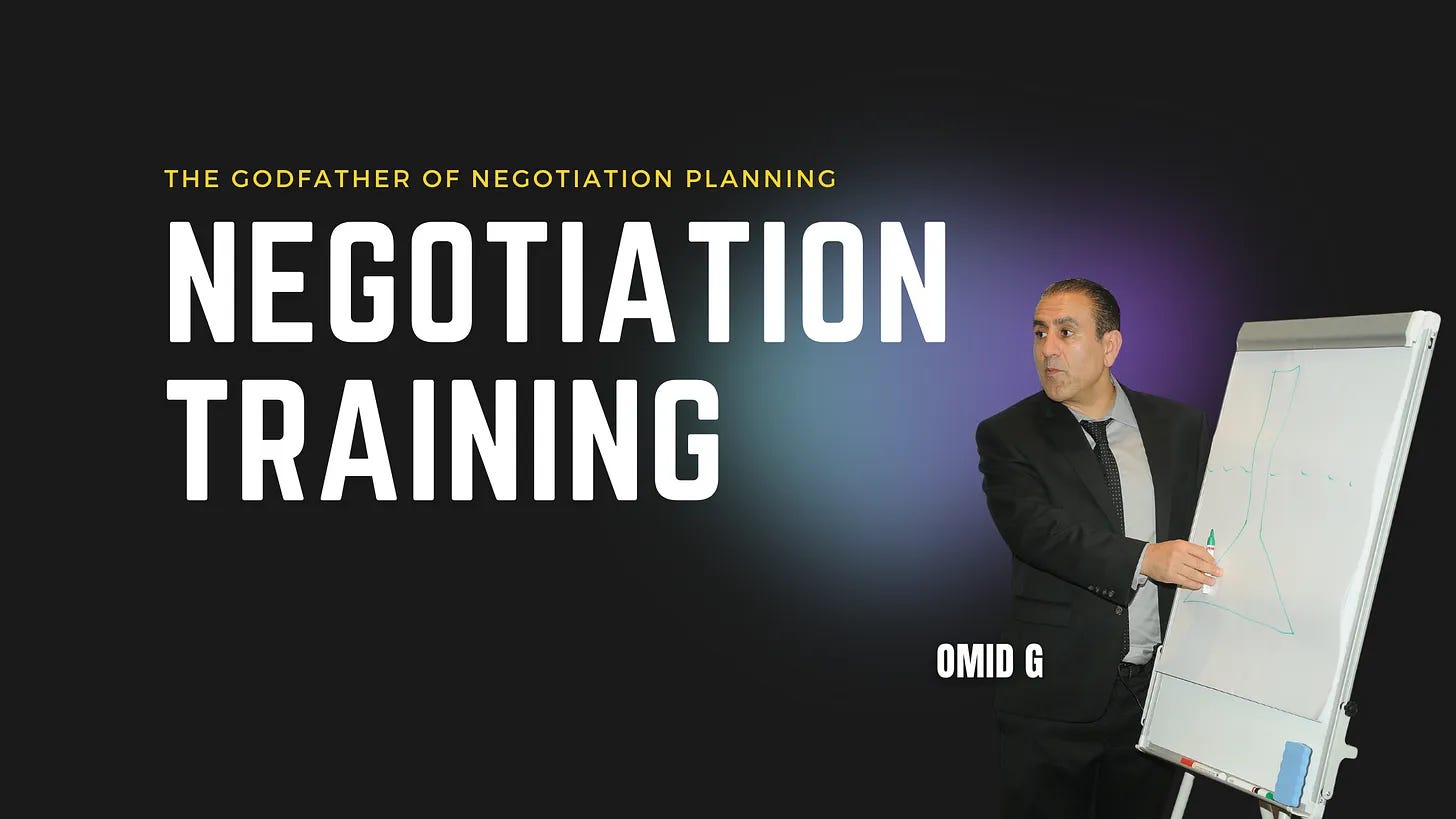Bargaining Power in Negotiations
Article by Omid G
Stop Solving Symptoms: Start Solving the Root Cause in Procurement
By Omid G – “The Godfather of Negotiation Planning,” Intel Corp
The Silent Killer in Procurement
No problem characterizes the procurement profession—
and perhaps even the human race—more than our tendency to address symptoms instead of root causes.
Like high blood pressure, it’s a silent killer.
We often treat negotiations as a moment in time.
That’s where the problem begins.
In reality, negotiations have a crescendo—but they are not a moment in time.
Done properly, deal design and setup can take years.
The Desert Analogy
Imagine a friend calls you and says:
“I drove into the middle of the desert, but didn’t take fuel, food, or water. Now I’m out of all three. What should I do?”
Your reaction would be predictable.
We’d all ask: “How did you get yourself into that situation?”
But this is what happens in procurement every day—just less obviously.
Rewarding the Wrong Skills
Every company I go into shows examples of:
“Driving into the desert” with a supplier
Getting stranded
Then asking for help
Worse?
The industry professionals who fix these fires are often celebrated as “savvy” or “veterans”—people who “just get it done”.
They win awards.
They get promoted.
But I don’t want those employees.
I don’t want someone who lets fires start and is really good at putting them out.
I want someone who prevents the fires in the first place.
Firefighters are useless in my book.
Negotiation Is Not a One-Time Event
We often find ourselves lacking bargaining power.
That only happens when you see negotiation as a one-time event.
By the time you realize it, it’s too late—it’s a symptom.
You need to peel the onion and ask:
🔁 Read this twice:
“What is the SOURCE of the supplier’s bargaining power?”
Take your time.
Understand this early in the process—ideally right after a negotiation wraps up, so you can architect a new approach while it’s still fresh.
Common Sources of Supplier Bargaining Power
Business unit allegiance to a particular supplier
Custom requirements from the business
Specific technologies or materials
Sole sourcing or limited vendor pool
High switching costs
Supply or volume constraints
Regional/geographic limitations
Regulatory or legislative restrictions
Once you understand the true source, you can architect a plan to shift it.
🔁 Read this twice:
Most external negotiations fail because of internal negotiation failure.
It’s Not About the Market—It’s About You
When we focus on symptoms, we blame the market.
When we focus on root causes, we find internal issues are often the true culprit.
The good news?
That means you have more control than you think.
It all comes down to how the business unit is defining its demand.
Focus on Outcomes, Not Products
🔁 Read this twice:
Business units tend to focus on what they want to buy—instead of what they want to achieve.
This mistake can:
Narrow supplier options
Increase switching costs
Create unnecessary complexity
Hand bargaining power to a single supplier
Flip the Script
Start with:
“What does the business unit want to accomplish?”
When you know the desired outcome, you can:
Assess alternative suppliers
Suggest alternative materials
Propose standardized solutions
Promote reuse
Justify all of it using the business unit’s own performance criteria
Guess what?
They can’t argue with themselves.
In Summary
Don’t drive into the desert without fuel, food, or water.
Plan ahead.
And frankly—who wants to go to the desert anyway?
Go Do Something Wonderful. Be Your Best.
— Omid G
“The Godfather of Negotiation Planning” – Intel Corp



